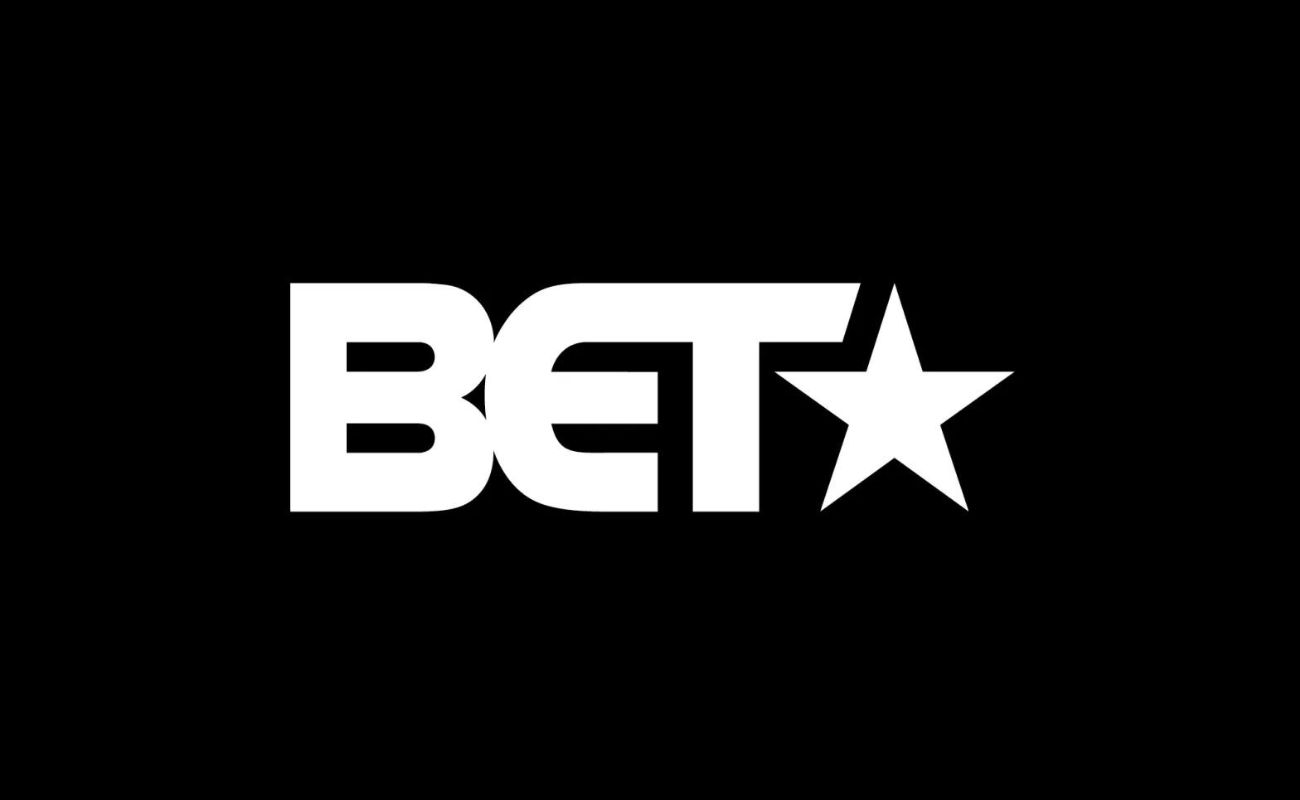Home>Technology>Home Entertainment Systems>Who Owns Television 360


Home Entertainment Systems
Who Owns Television 360
Modified: August 20, 2024
Discover the best home entertainment systems and find out who owns Television 360. Explore the latest technology and design options for your ultimate viewing experience.
(Many of the links in this article redirect to a specific reviewed product. Your purchase of these products through affiliate links helps to generate commission for Storables.com, at no extra cost. Learn more)
Introduction
Welcome to the world of home entertainment systems, where the possibilities are endless and the choices can be overwhelming. Gone are the days when television ownership simply meant having a box-shaped device in your living room. Today, it’s all about the evolution of technology and the diverse range of platforms that deliver the content we love.
From traditional broadcast networks to cable and satellite providers, streaming services, social media platforms, tech companies, global media conglomerates, and independent production companies – television ownership has transformed into a complex and multi-faceted landscape.
In this article, we’ll delve into the various entities that claim ownership over television content and explore how they have shaped the way we consume entertainment. So buckle up and get ready for a riveting journey through the world of television ownership!
Key Takeaways:
- Television ownership has evolved from limited options to a diverse landscape including streaming services, social media platforms, tech companies, global media conglomerates, and independent production companies, offering personalized, on-demand, and diverse content.
- The future of television ownership is shaped by technological advancements, changing viewer behaviors, and the ongoing exploration of new formats and distribution models, reflecting a shift towards more personalized, on-demand, and diverse content.
Read more: Who Owns Hisense Television
The Evolution of Television Ownership
The concept of television ownership has come a long way since its inception. In the early days of television, the ownership was limited to a few wealthy households who could afford the expensive equipment and antennas required for reception. However, as technology advanced and television sets became more affordable, ownership expanded to the middle class and eventually became a staple in almost every household.
Initially, television ownership primarily meant tuning into traditional broadcast networks such as ABC, NBC, and CBS. These networks had a monopoly over the airwaves and delivered a limited selection of channels to viewers. Families would gather around the television set to watch their favorite shows, often at specific times when they were broadcasted.
However, the landscape of television ownership changed dramatically with the rise of cable and satellite providers. These companies expanded the channel options available to viewers, offering a wider range of content catering to different interests and demographics. This shift allowed individuals to have more control over their television experience, as they could choose from various channels and subscribe to packages that suited their preferences.
Fast forward to the digital age, and the advent of streaming services revolutionized television ownership yet again. Services like Netflix, Hulu, and Amazon Prime Video made it possible to access an extensive library of TV shows and movies on-demand. This shift empowered viewers to consume content at their convenience, without being restricted by broadcasting schedules.
In recent years, social media platforms have also entered the realm of television ownership. Platforms like YouTube and Facebook have become a hub for creators to produce and share their own video content, effectively becoming broadcasters in their own right. Users can subscribe to channels, watch content, and engage with creators, blurring the lines between traditional television and online platforms.
In addition to traditional broadcasters, cable and satellite providers, streaming services, and social media platforms, tech companies like Apple, Google, and Amazon have also embraced television ownership. These tech giants have developed their own hardware devices, such as smart TVs and streaming sticks, and created their own content ecosystems.
Furthermore, global media conglomerates have a significant influence on television ownership. These conglomerates own multiple entertainment companies, including television networks, production studios, and streaming platforms. They often have extensive libraries of content and use their distribution channels to reach a wide audience.
Lastly, independent production companies play a vital role in television ownership. These companies are often responsible for producing original and innovative content that pushes the boundaries of traditional TV. Whether it’s a critically acclaimed drama series or a groundbreaking documentary, independent production companies add diversity and creativity to the television landscape.
The evolution of television ownership continues to unfold, shaping the way we consume entertainment. From broadcast networks to cable and satellite providers, streaming services, social media platforms, tech companies, global media conglomerates, and independent production companies – each entity contributes to the ever-expanding world of television ownership.
Traditional Broadcast Networks
Traditional broadcast networks have long been the foundational pillars of television ownership. These networks, such as ABC, NBC, CBS, and Fox, have played a significant role in shaping the television landscape and providing viewers with a wide array of programming options.
Historically, traditional broadcast networks functioned by transmitting television signals over the airwaves to antennas in households. Viewers would tune in to specific channels to watch their favorite shows, which were scheduled at designated times.
Traditional broadcast networks typically offer a mix of genres and programming formats to cater to diverse audience preferences. This includes news programs, sitcoms, dramas, reality shows, game shows, and sports broadcasts. They aim to appeal to a broad demographic and capture the attention of a wide range of viewers.
Advertisers heavily rely on traditional broadcast networks to reach a large audience. These networks offer ad slots during popular shows that generate high ratings. Advertisements play a crucial role in funding the production of television content and help keep programming free to audiences.
While traditional broadcast networks still remain an important part of television ownership, the landscape has become increasingly competitive with the rise of cable, satellite, and streaming services. These networks have had to adapt to the changing preferences and viewing habits of audiences.
In recent years, traditional broadcast networks have incorporated digital platforms to extend their reach and engage with viewers online. They provide streaming services that allow viewers to watch their shows on-demand or access additional content related to their favorite programs. This strategy allows broadcasters to reach a broader audience and maintain their relevance in the digital age.
Moreover, traditional broadcast networks have also embraced social media platforms to connect with viewers and promote their shows. They utilize platforms like Facebook, Twitter, and Instagram to share clips, teasers, and behind-the-scenes content, fostering a sense of community and building anticipation for upcoming episodes.
The future of traditional broadcast networks in the realm of television ownership remains uncertain. While they face stiff competition from streaming services and other digital platforms, their ability to produce high-quality content, capture large audiences, and adapt to evolving technologies and viewer preferences will determine their continued relevance in the industry.
Cable and Satellite Providers
Cable and satellite providers have played a significant role in the evolution of television ownership by expanding the range of channels and options available to viewers. These providers offer a vast selection of programming, catering to various interests and demographics.
Unlike traditional broadcast networks, which transmit signals over the airwaves, cable and satellite providers deliver content through cables or satellite dishes. This allows them to offer a more extensive range of channels and improve signal reliability, providing viewers with a broader array of programming choices.
Cable and satellite providers offer packages that include a mix of local, national, and international channels. Viewers can subscribe to different tiers or bundles, allowing them to access channels that align with their interests. This flexibility enables viewers to curate their own television experience and enjoy a diverse range of content.
One of the advantages of cable and satellite providers is their ability to offer specialized channels that cater to specific genres or niche markets. For example, sports fans can subscribe to sports-centric packages that provide access to a wide range of live sporting events, while movie enthusiasts can choose packages that include premium movie channels.
In addition to channels, cable and satellite providers also offer features such as on-demand programming, digital video recording (DVR), and interactive TV guides. These features enhance the viewing experience by allowing viewers to watch their favorite shows at their convenience, record content for later viewing, and easily navigate through the vast array of channels available.
Cable and satellite providers often work in tandem with traditional broadcast networks, as they distribute their channels to viewers’ homes. They negotiate carriage agreements with networks to ensure their inclusion in the channel lineup, allowing them to offer comprehensive packages that encompass a wide range of programming options.
However, with the rise of streaming services and the popularity of cord-cutting, where viewers opt to cancel their cable or satellite subscriptions in favor of online streaming, cable and satellite providers are facing a challenge. To adapt to changing viewer preferences, many providers are now offering their own streaming services or partnering with existing streaming platforms to offer bundled services. This allows viewers to access both traditional television channels and streaming content through a single provider.
The future of cable and satellite providers in the realm of television ownership depends on their ability to innovate and provide seamless integration between traditional television channels and online streaming. The competition in the market has pushed these providers to enhance their offerings, improve user experience, and find new ways to capture the attention of viewers in an increasingly digital and on-demand world.
Streaming Services
In the era of digital entertainment, streaming services have revolutionized the concept of television ownership. Streaming services like Netflix, Hulu, Amazon Prime Video, and Disney+ have emerged as dominant players in the industry, offering viewers a vast library of TV shows, movies, documentaries, and original content.
Unlike traditional broadcast networks and cable/satellite providers, streaming services operate entirely online, delivering content directly to viewers through internet-connected devices such as smartphones, smart TVs, tablets, and computers. This on-demand model allows viewers to access their favorite shows and movies whenever and wherever they want, without being tied to a specific broadcast schedule.
Streaming services have gained immense popularity due to their flexibility, convenience, and extensive content libraries. Subscribers can binge-watch entire seasons of TV shows, explore a wide range of genres, and discover hidden gems from around the world. With personalized recommendation algorithms, streaming services also help users discover new content based on their viewing history and preferences.
One of the key advantages of streaming services is their production of original content. From critically acclaimed dramas to captivating documentaries and innovative comedy series, streaming platforms invest heavily in creating unique and compelling shows that resonate with viewers. This has led to a rise in the popularity and recognition of streaming-exclusive content, making streaming services a force to be reckoned with in the industry.
Moreover, streaming services prioritize user experience by providing features such as multiple user profiles, offline downloads, and the ability to seamlessly switch between devices. This allows viewers to personalize their streaming experience, share accounts with family members, and enjoy content even when they don’t have an internet connection.
Streaming services have also embraced the concept of “cord-cutting,” where viewers opt to cancel their traditional cable or satellite subscriptions in favor of streaming services. This shift in consumer behavior has disrupted the traditional television ownership landscape and prompted networks and cable providers to evolve and adapt to the digital streaming revolution.
The competition among streaming services has intensified in recent years, with new entrants constantly emerging and established players expanding their offerings. This has led to the fragmentation of content across multiple platforms and the introduction of subscription-based models, where viewers may need to subscribe to multiple services to access all their desired content.
Overall, streaming services have reshaped the way we consume television content. With their vast libraries, original programming, and convenience, they have empowered viewers to take control of their entertainment choices. While traditional broadcast networks and cable/satellite providers continue to be relevant, streaming services have undoubtedly become a dominant force in the realm of television ownership.
Read more: Who Owns Rediscover Television?
Social Media Platforms
Social media platforms have emerged as unexpected players in the realm of television ownership. Platforms like YouTube, Facebook, Instagram, and TikTok have transformed the way we consume and engage with video content, blurring the lines between traditional television and online platforms.
Unlike traditional broadcast networks and streaming services, social media platforms operate on a user-generated content model. Anyone can create and share videos on these platforms, and the content ranges from short clips to longer-form series, covering a wide range of genres and topics.
One of the key advantages of social media platforms is the accessibility and global reach they offer. Anyone with a smartphone and an internet connection can create and distribute content to potentially millions of viewers worldwide. This democratization of content creation has opened doors for aspiring creators, allowing them to showcase their talent and gain recognition.
Social media platforms focus heavily on audience engagement. Viewers can like, comment, and share videos, which fuels conversation and builds a sense of community around specific content creators or shows. This interaction fosters a more personalized and interactive television experience, where viewers can directly communicate with their favorite creators and be a part of the conversation.
Furthermore, social media platforms have introduced new formats and trends in video content creation. The rise of short-form videos on platforms like TikTok has revolutionized the way we consume entertainment, with creators packing creativity and storytelling in bite-sized clips. This format has attracted a massive following, particularly among younger audiences.
Social media platforms have also provided an avenue for traditional broadcasters and production companies to extend their reach and engage with viewers. Many TV networks and shows have official accounts on platforms like Instagram and Twitter, where they share teasers, behind-the-scenes content, and interact with fans. This integration bridges the gap between traditional television and social media, creating a more immersive and interactive television experience.
However, social media platforms also present challenges for television ownership. The vast amount of user-generated content makes it challenging to regulate and monitor the quality and accuracy of the content. Additionally, content creators on social media platforms face monetization challenges, as the platforms rely heavily on ad revenue or alternative revenue streams like brand partnerships and sponsorships.
Despite these challenges, social media platforms continue to reshape the landscape of television ownership. They provide a platform for diverse voices and content creators to thrive and connect with audiences globally. As these platforms evolve and introduce more features and monetization options, their impact on the television industry is likely to grow even stronger.
When researching the ownership of a television network or channel, look for information on the parent company or media conglomerate that owns it. This can often be found on the network’s official website or in industry publications.
Tech Companies
Tech companies have become significant players in the realm of television ownership, leveraging their expertise in hardware, software, and connectivity to deliver innovative viewing experiences to consumers. Companies like Apple, Google, Amazon, and Roku have introduced their devices and platforms, revolutionizing the way we access and consume television content.
One of the key contributions of tech companies to television ownership is the development of smart TVs and streaming devices. These devices are equipped with built-in internet connectivity and streaming capabilities, allowing users to access a variety of streaming services, live TV, and on-demand content directly from their TVs.
Tech companies have also launched their streaming platforms and services. For instance, Apple introduced Apple TV+ and Google launched YouTube TV as a subscription-based service that provides access to a bundle of channels and on-demand content. These services aim to rival traditional cable and satellite providers, offering viewers an alternative way to access television content without a traditional subscription.
In addition to streaming services, tech companies have invested in original content production. For example, Apple TV+ and Amazon Prime Video have launched original shows and movies, featuring high-profile talent and garnering critical acclaim. This move positions them as both content providers and hardware/software providers, offering a comprehensive entertainment ecosystem to users.
Tech companies have also played a role in improving user interfaces and search capabilities. They have developed intuitive and user-friendly interfaces that make it easy for viewers to navigate through streaming services, find their favorite shows, and discover new content. Voice recognition and integration with virtual assistants have further enhanced the user experience, allowing viewers to control their TVs and access content with simple voice commands.
Furthermore, tech companies have introduced features like personalized recommendations and AI algorithms that analyze viewers’ preferences and viewing habits to suggest relevant content tailored to their tastes. This personalization adds convenience and helps viewers discover new shows and movies that align with their interests.
While tech companies have made significant strides in television ownership, they also face challenges. Compatibility issues, fragmentation of content across multiple platforms, and the need for various subscriptions can make the viewing experience fragmented and complex for consumers. However, tech companies continue to innovate and find solutions to overcome these challenges, striving to create a seamless and integrated television experience.
As tech companies expand their reach, invest in content production, and develop new technologies, their influence on television ownership is likely to grow. Their ability to deliver innovative devices, user-friendly interfaces, and compelling content will shape the future of how we consume and interact with television.
Global Media Conglomerates
Global media conglomerates are powerful entities in the world of television ownership, as they control a vast network of television networks, production studios, and streaming platforms. These conglomerates have extensive reach and influence, shaping the television landscape on a global scale.
Global media conglomerates typically own multiple television networks that cater to various demographics and genres. Examples of these conglomerates include Disney, Comcast/NBCUniversal, WarnerMedia, and ViacomCBS. Each conglomerate has a portfolio of networks that encompass entertainment, news, sports, and lifestyle programming, among others.
These conglomerates have the advantage of cross-promotion, leveraging their existing platforms to promote their new shows and projects. For instance, a network owned by a conglomerate can advertise its new series on other networks within the same conglomerate, maximizing exposure and generating buzz.
Global media conglomerates often produce their own original content to attract viewers and compete with other streaming services. They invest heavily in producing high-quality TV shows, movies, and documentaries, engaging top-tier talent and pushing creative boundaries. This investment in original content allows them to build brand equity and create a loyal fanbase.
In addition to traditional television networks, global media conglomerates also operate streaming services. These platforms, such as Disney+, Peacock, HBO Max, and Paramount+, provide subscribers with access to a vast library of content, including exclusive shows, movies, and live sports. This move reflects the industry’s shift towards on-demand and streaming-based viewing experiences.
One of the advantages of global media conglomerates is their ability to distribute content globally. With their extensive network of international channels and partnerships, conglomerates can reach viewers in numerous countries, providing localized content and expanding their market share.
Furthermore, global media conglomerates often have extensive intellectual property portfolios, thanks to acquisitions and partnerships with production studios. This allows them to leverage popular franchises and existing intellectual properties to create spin-offs, sequels, or new iterations, capitalizing on established fanbases.
However, the dominance of global media conglomerates in television ownership has raised concerns about media consolidation and the impact on diversity of content. Critics argue that the concentration of power in the hands of a few conglomerates limits opportunities for independent creators and reduces the variety of voices and perspectives in the industry.
Nonetheless, global media conglomerates continue to shape television ownership with their vast resources, cross-platform capabilities, and the ability to leverage their intellectual property. Their influence is expected to grow as they adapt to evolving viewer preferences and strive to maintain their positions as major players in the ever-changing television landscape.
Independent Production Companies
Independent production companies play a critical role in the realm of television ownership, contributing unique and innovative content that pushes the boundaries of traditional TV. These companies are typically smaller and operate outside the scope of major media conglomerates, allowing them to take creative risks and explore new storytelling avenues.
Independent production companies are known for their ability to create diverse and niche content that may not be found on mainstream television networks. They often focus on producing original series, documentaries, and films that cater to specific audiences or tackle niche subjects. This allows them to connect with viewers who have specific interests or are seeking fresh and unconventional storytelling.
One of the advantages of independent production companies is their flexibility and agility. They are not bound by the constraints of larger corporations and have the freedom to experiment with storytelling techniques, formats, and distribution models. This flexibility often leads to the creation of groundbreaking and critically acclaimed content.
Independent production companies are known for nurturing emerging talent, both in front of and behind the camera. They are often a breeding ground for up-and-coming writers, directors, actors, and crew members who use these opportunities to make their mark in the industry. This commitment to fostering new talent allows independent production companies to bring fresh perspectives and innovative storytelling approaches to the screen.
Despite the challenges they face in terms of budget limitations and distribution reach, independent production companies have found success by partnering with streaming platforms and cable networks. These partnerships provide them with a platform to showcase their content to a larger audience and enhance their visibility.
Streaming services, in particular, have become a valuable platform for independent production companies. These services seek unique and diverse content that resonates with a global audience and are often more willing to take risks on unconventional storytelling. As a result, independent productions can find a platform and an audience that appreciates their distinct voice and artistic vision.
Additionally, independent production companies have benefited from advancements in technology and digital distribution. The democratization of filmmaking tools and online platforms has made it more accessible for independent creators to produce high-quality content and reach a wider audience. This has allowed independent production companies to compete with larger studios and gain recognition for their work.
Overall, independent production companies bring a fresh perspective to the world of television ownership. They contribute diverse and innovative content that appeals to niche audiences and challenges traditional television norms. By fostering emerging talent and leveraging partnerships with streaming services and networks, independent production companies are able to make their mark and shape the future of television.
Read more: Who Owns Fox Television
Television Ownership Trends
Television ownership has undergone significant changes and trends in recent years, reflecting the evolving preferences and behavior of viewers. These trends have reshaped the television landscape and influenced the way we consume content. Let’s explore some of the key television ownership trends.
Shift towards Digital Streaming: The rise of digital streaming services has revolutionized television ownership. Viewers are increasingly opting for streaming platforms like Netflix, Hulu, and Amazon Prime Video, which offer a vast library of on-demand content. This shift has led to a decline in traditional cable and satellite subscriptions as more viewers “cut the cord” in favor of streaming services.
On-Demand Viewing: The concept of appointment viewing has given way to on-demand viewing. With streaming services and DVR capabilities, viewers can watch their favorite shows whenever and wherever they want. This trend reflects the desire for control and convenience in television consumption, as viewers no longer have to adhere to strict broadcasting schedules.
Personalization and Recommendation Algorithms: Streaming platforms harness the power of recommendation algorithms to personalize the viewing experience. By analyzing viewer preferences and viewing habits, these algorithms suggest content that aligns with the viewer’s interests. This approach offers a curated experience that helps viewers discover new shows and movies based on their individual tastes.
Original Content Production: The competition among streaming services and networks has fueled a surge in original content production. Streaming platforms like Netflix and Amazon Prime Video, as well as traditional networks, invest heavily in producing exclusive and high-quality content to attract and retain subscribers. This trend has brought about a golden age of television with a diverse range of critically acclaimed series and compelling storytelling.
Convergence of Social Media and Television: Social media platforms, such as YouTube, Facebook, and Instagram, have become an integral part of television ownership. Creators and networks utilize these platforms to promote shows, share behind-the-scenes content, and engage with viewers. The integration of social media and television has fostered a more interactive and community-driven viewing experience.
Expansion of International Content: Thanks to streaming platforms and digital distribution, viewers now have access to a wider range of international content. International shows and movies from different countries and cultures have gained popularity and become more accessible to global audiences. This trend reflects the growing interest in diverse storytelling and the removal of geographical barriers in television consumption.
Growth of User-Generated Content: The democratization of content creation through platforms like YouTube and TikTok has given rise to user-generated content. Anyone with a camera and an internet connection can create and share videos, blurring the lines between traditional television and online platforms. This trend has opened doors for new talent, unique perspectives, and non-traditional formats of entertainment.
As television ownership continues to evolve, these trends indicate a consumer-driven shift towards more personalized, on-demand, and diverse content. The future of television ownership is likely to be shaped by technological advancements, changing viewer behaviors, and the ongoing exploration of new formats and distribution models.
Conclusion
The landscape of television ownership has expanded and transformed significantly over the years, driven by advancements in technology and changing viewer preferences. From traditional broadcast networks to cable and satellite providers, streaming services, social media platforms, tech companies, global media conglomerates, and independent production companies, each entity plays a crucial role in shaping the way we consume entertainment.
Television ownership has shifted from the limited availability of a few channels to an abundance of options and platforms. The rise of streaming services has revolutionized the way we access and consume television content, providing on-demand viewing and personalized recommendations. As viewers increasingly embrace digital streaming, traditional cable and satellite providers are adapting by offering their own streaming services or partnering with existing platforms.
Social media platforms have become unexpected players in television ownership by facilitating the creation, sharing, and engagement of video content. They have transformed the viewing experience into a more interactive and community-driven one, blurring the lines between traditional television and online platforms.
Tech companies have leveraged their hardware, software, and connectivity expertise to offer innovative viewing experiences. Smart TVs, streaming devices, and their own streaming platforms have given viewers more control and convenience in accessing content. They continue to shape television ownership by developing user-friendly interfaces, personalized recommendations, and original content.
Global media conglomerates hold significant power in television ownership, with their vast networks of television channels, production studios, and streaming platforms. They produce diverse content and leverage their intellectual property portfolios to both entertain existing audiences and attract new viewers worldwide.
Independent production companies bring a fresh and distinct voice to television ownership. They offer unique and niche content that resonates with specific audiences, often pushing creative boundaries and fostering emerging talent. Through partnerships with streaming services and networks, independent productions find a platform for their work and contribute to the diversity of television content.
Throughout these trends and changes, the viewer remains at the center of television ownership. Today’s viewers seek personalized, on-demand, and diverse content that reflects their individual interests. They have the power to choose from a diverse range of programming options and platforms, shaping the future of television consumption.
In conclusion, the world of television ownership is a dynamic and ever-evolving landscape. Traditional models coexist with new digital platforms, and the lines between various entities blur as they adopt innovative strategies to capture viewers’ attention. As technology advances and viewer preferences continue to evolve, television ownership will undoubtedly undergo further transformations, providing viewers with even more choices and opportunities to enjoy their favorite shows and movies.
Frequently Asked Questions about Who Owns Television 360
Was this page helpful?
At Storables.com, we guarantee accurate and reliable information. Our content, validated by Expert Board Contributors, is crafted following stringent Editorial Policies. We're committed to providing you with well-researched, expert-backed insights for all your informational needs.














0 thoughts on “Who Owns Television 360”